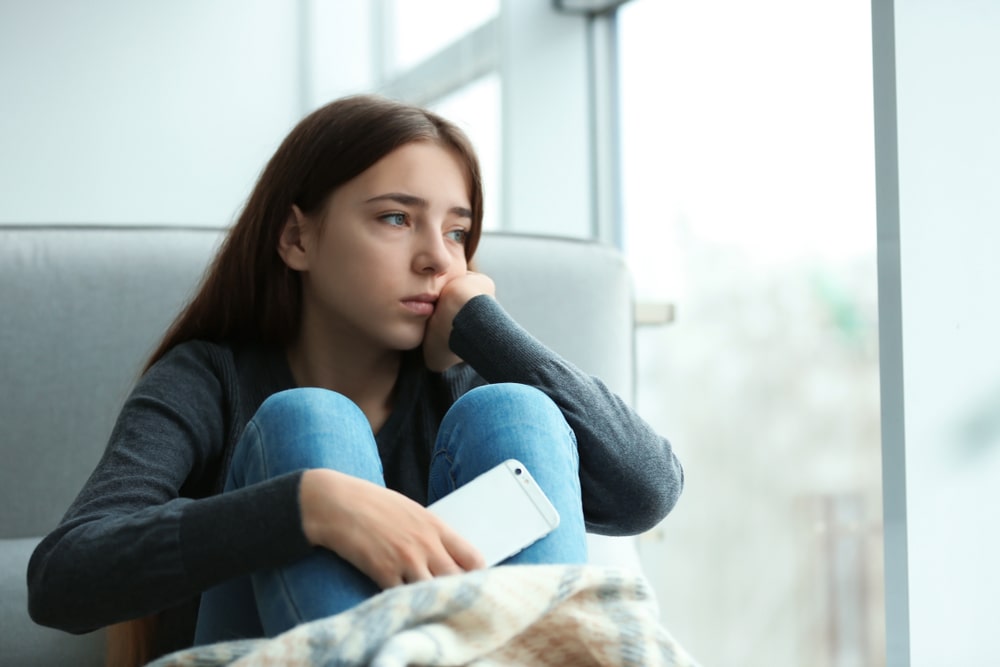Anxiety is the body’s natural response to stress. As defined in the Oxford English Dictionary, anxiety is a “feeling of worry, nervousness, or unease, typically about an imminent event or something with an uncertain outcome.” Social anxiety refers to fear or worry related to interactions in social situations. It occurs when someone is overly concerned about being humiliated, embarrassed, evaluated, or rejected by others in social situations. It is virtually impossible to avoid experiencing some level of social anxiety during adolescence. However, when a young person struggles with debilitating symptoms of social anxiety to the point that they interfere with his or her ability to function in daily life, it may be indicative of social anxiety disorder.
Social Anxiety Disorder
Social anxiety disorder (SAD), also known as social phobia, is listed in the Diagnostic and Statistical Manual of Mental Disorders, Fifth Edition (DSM-5) as a chronic mental health condition. According to the National Institute of Mental Health (NIH), social anxiety disorder is “characterized by persistent fear of one or more social or performance situations in which the person is exposed to unfamiliar people or to possible scrutiny by others.” Social anxiety disorder is more complicated than a teenager trying to get out of something they do not want to do. A teenager with social phobia will experience a stronger and more intense sense of anxiety surrounding uncomfortable social situations. They will go to great lengths to avoid social situations due to a fear of being negatively evaluated (e.g., embarrassed, judged, or rejected) by others.
Signs and Symptoms
The signs and symptoms that a teen struggling with social anxiety disorder may exhibit will vary. Many young people with SAD, for example, try to make themselves invisible to others (e.g., they do not speak so they will not draw attention to themselves, they keep their gaze cast downward so they will not make eye contact, they avoid situations so they will not have to face people, etc.). The National Social Anxiety Center provide the following examples that could indicate a teen is struggling with social phobia:
- Extremely vulnerable to any kind of criticism from others
- Goes to excessive lengths to avoid interacting with others
- Low self-esteem and self-worth
- Does not express opinions, thoughts, beliefs in front of others
- Emotional instability (e.g., agitation, irritability, sadness, anger, crying spells, depression, etc.)
- Physical symptoms (e.g., muscle tension, excessive sweating, shaking, etc.)
- Persistent fears of being socially inferior
In addition to the above, a teen with social anxiety disorder may have frequent self-deprecating thoughts and thoughts of inadequacy. Social anxiety that goes unaddressed can lead to isolation and reduced confidence. Social anxiety disorder is the third most common mental disorder, and the prevalence of adolescent SAD is an estimated 9.4% in America.
Treatment In Calabasas
Calabasas is a city in California. It is a well-known suburb of Los Angeles, located west of the San Fernando Valley and north of the Santa Monica Mountains. Over the past decade, the city of Calabasas has grown in its reputation for luxury as well as for privacy which makes it a hidden gem for residential living for society’s elite, and one of the most desirable destinations in Los Angeles County. It is also home to a plethora of highly qualified mental health clinicians providing an array of therapeutic services and treatment options.
The information above is provided for the use of informational purposes only. The above content is not to be substituted for professional advice, diagnosis, or treatment, as in no way is it intended as an attempt to practice medicine, give specific medical advice, including, without limitation, advice concerning the topic of mental health. As such, please do not use any material provided above to disregard professional advice or delay seeking treatment.


